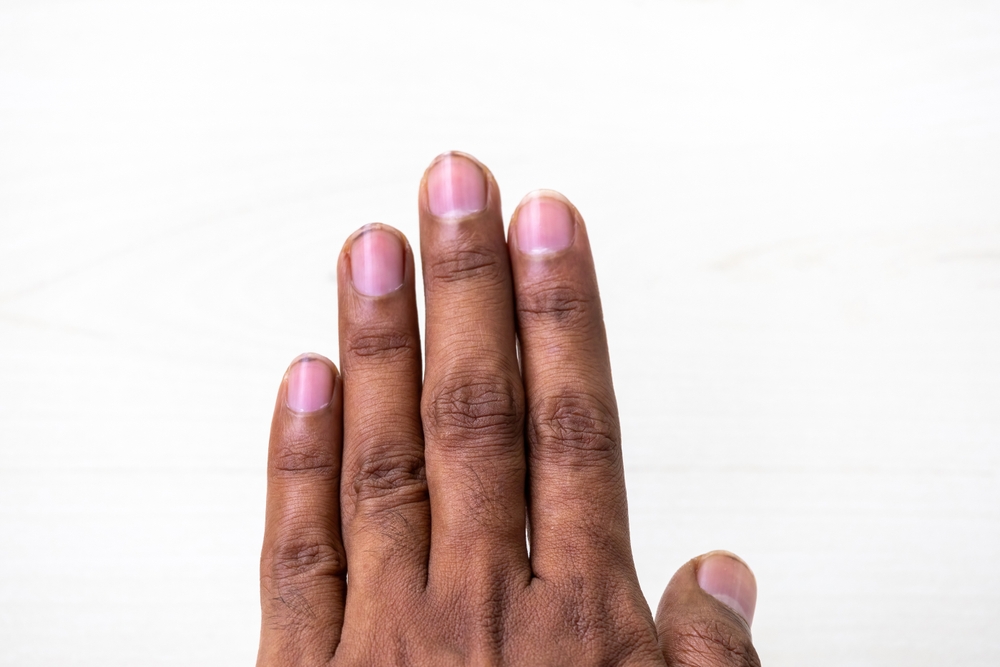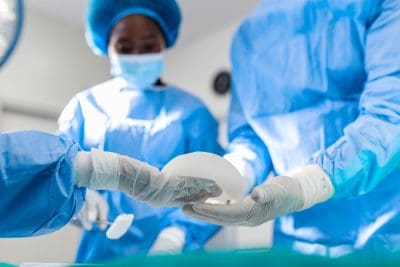That earthy smell after a spring rain isn’t just pleasantly nostalgic—it might be one of the most powerful health tonics on the planet. The rich microbial universe living in healthy soil could be the missing piece in our modern health puzzle, offering benefits that range from mood enhancement to immune system renovation. As it turns out, our obsession with sterility might be making us sick, and the cure might be as simple as digging in the dirt.
The microscopic miracle workers
Beneath your feet lies a universe more diverse than all the stars in our galaxy. A single teaspoon of rich soil contains more microorganisms than there are people on Earth—billions of bacteria, fungi, protozoa, and nematodes creating a complex living ecosystem that’s been evolving for billions of years.
These aren’t just passive particles. They’re sophisticated biochemical factories producing compounds with remarkable effects on human health. From antibiotics and anti-inflammatory agents to mood-regulating molecules, soil microbes manufacture an astonishing pharmacy of beneficial substances.
The most fascinating part? Our bodies evolved alongside these soil dwellers. Throughout human evolution, we’ve been in constant contact with soil microorganisms through our food, water, and environment. Our immune systems and even our brain chemistry developed in conversation with these tiny neighbors, creating a relationship that modern sterile living has recently disrupted.
The happiness bacterium
Perhaps the most famous soil microbe with proven health benefits is Mycobacterium vaccae—a humble bacterium that has demonstrated remarkable effects on brain chemistry. This unassuming soil dweller has earned the nickname “the happiness bacterium” for good reason.
When exposed to M. vaccae, whether through gardening, hiking, or direct supplementation in studies, the human brain responds by boosting serotonin production—the same neurotransmitter targeted by many antidepressant medications. This natural mood elevator works without side effects, dependency, or prescription costs.
The bacterium appears to modulate cytokine levels, reducing inflammation that’s increasingly linked to depression and anxiety. People who regularly garden or farm report higher happiness levels and lower rates of depression, with soil contact potentially playing a significant role in this wellbeing boost.
What makes this particularly fascinating is how it challenges our understanding of depression itself. Rather than seeing low mood as purely a brain chemical imbalance, this research suggests that disconnection from environmental inputs our bodies evolved with—like beneficial soil microbes—might contribute to our mental health challenges.
The immune educator
Beyond mood enhancement, soil microbes serve as sophisticated educators for our immune systems. Modern immune dysfunction, from allergies to autoimmune conditions, has risen alongside our increasing separation from natural environments and the microbes they contain.
Early life exposure to diverse soil bacteria appears to train the immune system to distinguish between genuine threats and harmless substances. This education process helps develop a balanced immune response rather than the hair-trigger reactivity common in allergies or the confused self-attack of autoimmune disorders.
The “farm effect” demonstrates this principle clearly. Children raised on traditional farms with regular exposure to diverse microbes from soil, animals, and unpasteurized milk show dramatically lower rates of asthma, allergies, and other immune-mediated conditions compared to their urban counterparts.
This immune education happens through complex signaling between microbes and your immune cells, creating a sophisticated language that our sanitized environments have largely silenced. Your immune system, it seems, needs conversation with microbes to develop properly—and soil provides some of the most beneficial dialogues.
The inflammation fighters
Chronic inflammation underlies many modern health challenges, from heart disease and diabetes to depression and autoimmune conditions. Interestingly, certain soil microbes produce potent anti-inflammatory compounds that can help regulate this destructive process.
These microscopic inflammation fighters work through multiple pathways. Some produce compounds that directly inhibit inflammatory cytokines. Others modulate our gut microbiome—the internal ecosystem that heavily influences our inflammatory responses. Still others appear to stimulate regulatory T-cells that help maintain appropriate immune balance.
The diversity of soil microbes seems particularly important. Different species produce different anti-inflammatory compounds, creating a natural pharmacy of complementary molecules. This stands in stark contrast to pharmaceutical approaches that typically target single pathways with powerful but often side-effect-laden medications.
Even more intriguing is how these soil-derived compounds appear to selectively reduce harmful inflammation while preserving beneficial inflammatory responses needed for healing and fighting infection—a nuanced approach that modern pharmaceuticals struggle to match.
The resistance defenders
As antibiotic resistance threatens to return us to a pre-antibiotic era of medicine, soil microbes offer hope for new treatment approaches. Many of our most important antibiotics—from penicillin to streptomycin—originally came from soil microorganisms.
These miniature chemical warfare specialists have been battling each other for billions of years, evolving sophisticated compounds to gain competitive advantages. This natural arms race has produced antimicrobial molecules far more diverse and innovative than anything human chemists have designed.
What makes soil microbes particularly valuable is their ability to target resistant pathogens. Recent discoveries include teixobactin, discovered in soil bacteria, which kills drug-resistant bacteria through mechanisms that pathogens struggle to develop resistance against.
Beyond just producing antibiotics, soil microbes can help prevent resistance by maintaining microbial diversity that naturally suppresses pathogen overgrowth—a balanced approach rather than the scorched-earth strategy of conventional antibiotics that often leads to resistance.
The detoxification department
Our industrialized world has saturated our environment with synthetic chemicals, from pesticides and plastics to pharmaceuticals and industrial pollutants. Remarkably, soil microbes offer some of our best tools for breaking down these persistent compounds.
These microbial cleanup specialists have evolved extraordinary enzymatic capabilities, allowing them to decompose complex molecules and extract energy or nutrients from unlikely sources. Mycoremediation—using fungi to break down toxins—represents one of the most promising applications of this microbial talent.
For example, certain soil fungi can break down petroleum compounds, transforming toxic oil spills into harmless components. Others can degrade pesticides, plastics, and even radioactive compounds. This isn’t just environmental science—it has direct health implications, as these same detoxification processes can occur within our bodies when we maintain healthy soil-derived microbiomes.
By reestablishing our connection with soil microbes, we may enhance our own detoxification capabilities—increasingly important in our chemical-laden world.
The garden prescription
How can we practically reconnect with these beneficial soil microbes? Gardening offers perhaps the most accessible and rewarding approach. Whether tending a backyard vegetable plot, nurturing houseplants, or participating in community gardens, direct contact with soil creates opportunities for beneficial microbial exposure.
The key is getting your hands dirty. Gardening with bare hands allows direct skin contact with soil microbes, which can be absorbed through minor abrasions or inhaled when soil particles become airborne during gardening activities. The benefits extend beyond just microbial exposure—combining physical activity, stress reduction, and often healthier eating of garden-fresh produce.
For urban dwellers without garden access, alternatives exist. Houseplants with their potting soil offer modest exposure. Forest bathing—spending time among trees whose roots harbor rich microbial communities—provides another pathway. Even farmers markets, where produce often carries traces of soil microbes, can help reconnect us with this missing microbial link.
The historical perspective
Our disconnection from soil microbes represents a dramatic deviation from human evolutionary history. For thousands of generations, humans lived in intimate contact with soil—gathering food, building shelters, and practicing agriculture without the barriers of concrete, asphalt, and overly sanitized environments.
Only in the last few generations have modern conveniences and hygiene practices largely severed this ancient relationship. While these advances have certainly reduced infectious disease transmission, they’ve simultaneously disrupted beneficial microbial interactions that supported our health in less visible but equally important ways.
This historical lens helps explain why reintroducing controlled exposure to beneficial soil microbes might address health challenges that have emerged alongside our increasingly sterile lifestyles. It’s not about rejecting modern hygiene but about selectively reestablishing connections that our bodies evolved to expect.
The practical balance
Finding the sweet spot between beneficial microbial exposure and protection from pathogenic microbes requires thoughtful balance rather than extremes. Washing produce to remove potential pathogens like E. coli makes sense, but perhaps growing some of your own vegetables and herbs with minimal washing preserves beneficial soil organisms.
Similarly, handwashing remains important after using restrooms or before eating, but obsessive sanitizing after every environmental contact may deprive us of beneficial microbial interactions. The goal isn’t a return to pre-hygienic practices but a more nuanced approach that preserves beneficial microbial relationships while minimizing exposure to truly harmful microorganisms.
As our understanding of the soil microbiome and its relationship to human health deepens, we’re beginning to appreciate that dirt isn’t something to fear or avoid at all costs. Instead, it might be one of our most potent medicines—a complex, living pharmacy that helped shape our evolution and might hold keys to addressing our modern health epidemics.
















